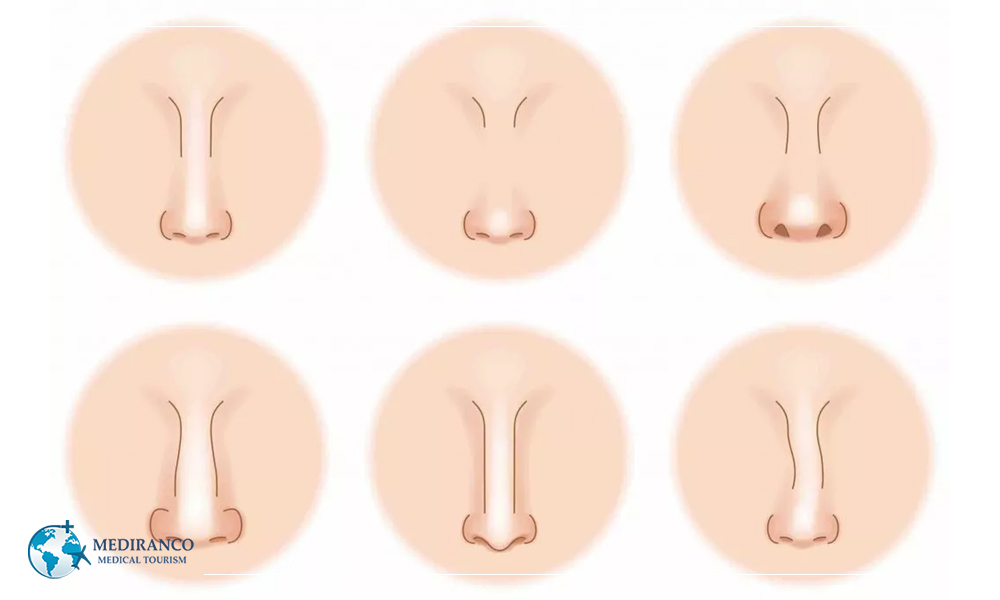Have you ever wondered about the most popular nose shape? The quest for the perfect nose shape has become a fascinating subject in the world of cosmetic enhancements. While each nose is unique, certain trends have emerged in different cultures, influencing the popularity of certain nose shapes. In this article, we will explore the cultural attitudes towards nose shapes and how they vary across different regions. Understanding these trends can help international medical tourists make informed decisions about their desired results and suitable surgical options. Remember, the most desirable nose shape is one that creates facial balance and harmony, complementing the overall appearance of the face.
Rhinoplasty, a popular procedure in the field of medical tourism that falls under the category of cosmetic surgeries, is aimed at enhancing the appearance or functionality of the nose. Typically, it is carried out by an otolaryngologist (head and neck surgeon), maxillofacial surgeon, or plastic surgeon.
Table of Contents
ToggleRhinoplasty aims to:
- Enhance the aesthetic appeal of the nose by altering its shape or size.
- Refine the nostril opening to create a narrower appearance.
- Correct any damage or congenital deformities.
- Correcting a congenital or acquired nasal septum deviation
- Improve breathing difficulties
- Treating a diagnosed cartilaginous tissue pathology in the nasal cavity
So, whether you seek a refined look or seek to address breathing issues, rhinoplasty is an option to consider but in this article, we shift our focus towards the aesthetic aspect of rhinoplasty. Specifically, we delve into the realm of popular nose shapes and examine which one might suit your preferences if you aspire to enhance the visual appeal of your nose—without any pre-existing medical concerns that necessitate immediate attention. Join us as we unravel the secrets of achieving a more aesthetically pleasing nose through the wonders of rhinoplasty!
Understanding Nose Shapes

The human nose is incredibly diverse, displaying a wide array of shapes, sizes, and proportions. Nasal shape is primarily influenced by genetics, but it can also be influenced by regional and ethnic factors. While it is essential to recognize that beauty ideals vary across cultures, certain nose shapes have gained popularity and recognition worldwide.
Types of Nose Shapes that are commonly observed:

Button/ Snub Nose is short, small, and slightly upturned, providing a dainty look and is often associated with a cute and playful appearance.

Nubian Nose is wider and has a broad base with a rounded or bulbous tip, commonly found among individuals of African descent.

The Roman nose is associated with strength and elegance due to its prominent, slightly curved bridge with a distinct hook or bends at the tip.

The straight nose (Greek) has a symmetrical appearance and is considered a classic and balanced nose shape
The Role of Media and Celebrity Influence in popular nose shape
The media, particularly fashion and entertainment industries, play a significant role in shaping beauty ideals and influencing nose shape preferences. Celebrities often serve as role models for individuals seeking cosmetic enhancements, leading to a desire to emulate their appearances. Media representation of different nose shapes has broadened over recent years, allowing for greater inclusivity and acceptance of diverse beauty standards.
The Importance of Personalization in Rhinoplasty
While the discussion of popular nose shapes serves as a guideline, it is crucial to acknowledge that every individual’s facial features and desires are unique. Rhinoplasty surgeons strive to create customized results that enhance a patient’s facial harmony, rather than conforming to pre-set ideals. A successful rhinoplasty procedure considers the patient’s ethnic background, facial structure, and overall aesthetic goals.
Emerging Trends and Patient Considerations
Rhinoplasty techniques continue to evolve, accommodating a wider range of patient preferences and diverse cultural standards of beauty. Surgeons now have access to methods that allow for more personalized results, including preservation rhinoplasty and augmentation rhinoplasty. It is essential for prospective patients to consult directly with experienced surgeons to discuss their expectations thoroughly, ensuring that they are well-informed and confident in their decisions.
It is important to note that cultural attitudes towards nose shapes are not universal and vary widely within each culture. The concept of the “perfect nose shape” has evolved with globalisation and increased cultural exchange, leading to a more diverse appreciation of nose shapes across many cultures.
In Western societies, there has historically been a preference for a straight or slightly curved nasal bridge with a well-defined tip, influenced by classical Greek and Roman ideals of symmetry and proportion. However, contemporary Western societies increasingly value diversity in nose shapes.
East Asian cultures, such as China, Japan, and Korea, favour softer and more delicate nose shapes, with the button nose being particularly desirable for its small and rounded appearance, symbolising youthfulness and cuteness.
Many African cultures celebrate broader and more prominent nose shapes, with a wider nasal bridge and flared nostrils considered beautiful and associated with strength, identity, and heritage.
Middle Eastern cultures, including Arab, Persian, and North African communities, appreciate the aquiline or Roman nose shape with its prominent and slightly curved bridge, seen as a symbol of refinement and strength.
Determining the most popular nose shape can be a complex and subjective topic, influenced by cultural, historical, and personal factors. While certain nose shapes may enjoy popularity in different regions, it is crucial for individuals seeking rhinoplasty to prioritize their personal aesthetic goals and work with experienced surgeons who can deliver personalized results.
The ideal nose shape is all about being smooth and not sticking out too much from the face. Typically, women tend to prefer a cute upturned nose as their perfect choice.
To determine the perfect nose shape, it’s important to consider various angles. In fact, the shape of your nose is primarily defined by four key angles.

Nasofrontal (Radix Angle)
This angle refers to the angle between your nose and forehead. A high nasofrontal angle indicates a more prominent bridge, whereas a low nasofrontal angle results in a flatter bridge.

Nasofacial (Frontal Facial Angle)
This angle refers to the angle the angle between your nasal base and upper lip. A higher nasofacial angle indicates a more prominent nose, whereas a lower nasofacial angle suggests a less prominent nose.

Nasolabial (Alar Facial Angle)
The nasolabial angle is determined by the angle between the tip of your nose and your upper lip. It defines the shape of your alar (nostril) base. A wider nasolabial angle indicates an upturned nose, while a narrower nasolabial angle suggests a straight or downturned nose.

Nasomental (Mental Angle)
The nasomental angle is influenced by the projection and height of your nose, as well as the structure of your chin. If you have a flat nose or a recessed chin, this angle may deviate from the “ideal” range.
These angles work collectively to shape and define the overall appearance of your nose. If you are unsatisfied with your nose’s shape, rhinoplasty surgery can be an option to enhance its aesthetic.
By doing so, international medical tourists can achieve the desired facial harmony that aligns with their individual preferences and cultural backgrounds.
What have the studies so far reached regarding the popular nose shape?
According to a recent study, the most aesthetically pleasing nose angle is around 106 degrees.
Researchers from New York University conducted the study by presenting 4,000 men and women with side portraits of young white women (aged 18 to 25). The women’s nasal tip projection and rotation varied between 96-116 degrees.
Participants took part in an online survey where they had to pick the most attractive nose. The nose with a rotation of 106 degrees, known as the columellar facial angle, was deemed the most appealing.
Published in the JAMA Facial Plastic Surgery Journal, the researchers highlighted the ongoing challenge of objectively defining an ideal nasal tip projection (NTP) as a standard of beauty. Many attempts have been made over the years, but no definitive aesthetic benchmark has emerged.
One intriguing aspect of this study is that it recognized the mathematical impact of rotation on NTP ratio calculations, making it a unique contribution to the field.
However, it’s important to note that the study’s limitations include a lack of representation from the general population. Additionally, the researchers acknowledged that aesthetic criteria for white faces might not directly apply to faces of other races or ethnicities.
Keep in mind that beauty is diverse and subjective, and what matters most is feeling confident and comfortable in your own skin!

For more information about rhinoplasty in Iran cost, you can contact Mediranco so that our experts can advise you about the surgery you want and finally know the exact cost of rhinoplasty.

